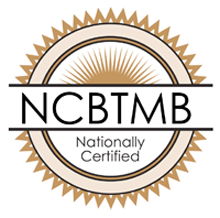Embarking on a career as a personal trainer offers the opportunity to foster positive changes in others’ lives. Understanding the personal trainer landscape, including how much do personal trainers make on average and what factors influence those earnings, is crucial for professionals in this field.
This article will detail the essential aspects of a personal trainer’s earnings, beginning with an overview of the average personal trainer salary and how certifications, like those required for a certified personal trainer salary, impact earnings. Additionally, it will highlight the top-paying locations, shedding light on geographical differences in income potential.
Finally, career path and growth opportunities will be discussed, offering insights into how personal trainers can maximize their earnings and advance in their careers.
Average Personal Trainer Salary
According to the U.S. Bureau of Labor Statistics, the median annual wage for fitness trainers and instructors was $46,480 in May 2023*. However, salary ranges can vary widely depending on factors like education, certifications, additional skills, and years of experience in the profession.
Overview Across Different Locations
Personal trainer salaries differ across cities and regions. Compared to the national average, the highest personal trainer salary is found in San Francisco, CA, where the annual mean wage is $82,820**.
Comparison with Other Fitness Industry Roles
While evaluating personal trainer salaries, it’s helpful to compare them with similar roles in the fitness industry. Some related jobs include athletic trainer, sales trainer I, sales trainer II, sales trainer III, and sales trainer IV. The specific salary ranges for these positions may vary, but they provide context for understanding the earning potential in the broader fitness and training field.
Top Paying Locations
The salary for a personal trainer can vary greatly depending on their location. Cities differ in their cost of living, demand for personal training services, and the general health and fitness culture, all of which play an important role in shaping a personal trainer’s income.
Factors Contributing to Higher Salaries
- Affluence: Cities like New York, San Francisco, and Boston have a significant number of residents who prioritize health and fitness and are willing to invest in personal training services.
- Diverse Fitness Needs and Specializations: In culturally diverse cities like Los Angeles and Miami, personal trainers can tap into a wide array of fitness preferences and niches. From celebrity fitness regimes to beach workouts, trainers who specialize can command higher rates.
- High Demand for Health and Wellness Services: Cities such as Seattle and Washington D.C. show a strong demand for health and wellness services. This is partly due to the busy lifestyles of professionals in these areas, who often seek out personal training to maintain a healthy balance.
- Robust Fitness Industry Infrastructure: Most of these cities boast a well-developed fitness industry infrastructure. The presence of numerous gyms, wellness centers, and fitness studios in cities like Chicago and Houston provides trainers with ample opportunities for employment and client acquisition.
- Active Lifestyle: Cities like Atlanta and Seattle encourage an active lifestyle, which naturally boosts the market for personal training. Trainers in these cities benefit from a population that values physical activity and is more inclined to seek professional fitness guidance.
Career Path and Growth Opportunities
As a personal trainer, you have the opportunity to progress along various career paths and explore diverse growth opportunities. Your journey can take you from entry-level positions to advanced specializations, higher earnings, and even entrepreneurial ventures.
Typical Career Progression
Many personal trainers begin their careers working at commercial gyms or fitness centers. With experience and additional certifications, they can advance to positions with higher earning potential, such as lead trainer or fitness manager roles. Some trainers choose to become self-employed, offering personalized training services and setting their own rates.
Advanced Certifications and Specializations
To enhance your skills and marketability, you can pursue advanced certifications in areas like corrective exercise, sports conditioning, or nutrition. Specializing in a particular area, such as working with athletes, prenatal/postnatal clients, or individuals with specific medical conditions, can open up new career avenues and allow you to command higher rates.
Certifications from reputable organizations like the National Strength and Conditioning Association (NSCA), American College of Sports Medicine (ACSM), or National Academy of Sports Medicine (NASM) are highly regarded in the industry. Obtaining these certifications can demonstrate your expertise and commitment to professional development.
Long-term Earnings Potential
As you gain experience and expand your skill set, your earning potential as a personal trainer can increase significantly. Experienced trainers with a strong client base and specialized expertise can earn well into the six-figure range, especially if they operate their own businesses or work with high-net-worth clients.
Additionally, you may consider pursuing related careers in the fitness industry, such as becoming a fitness manager, wellness director, or exercise physiologist. These roles often require advanced degrees and certifications but offer higher earning potential and opportunities for career growth.
Conclusion
The journey through the nuances of personal trainer salaries reveals a career path ripe with opportunities for financial growth and professional development. From the average earnings across various locations to the top factors that influence salary, such as certifications, specializations, and geographical location, it’s clear that personal trainers have the potential to achieve significant earnings.
In moving forward, personal trainers should consider the implications of these findings on their career choices and strategies for advancement. Focusing on obtaining relevant certifications, targeting high-demand locations, and specializing in niche areas are concrete steps that can elevate one’s salary and career trajectory.
Additionally, the exploration of growth opportunities within the fitness industry underscores the importance of continuous learning and adaptation in response to market demands. As such, aspiring and established personal trainers alike stand to benefit from a proactive approach to career planning, ensuring their success and financial stability in this rewarding field.
*https://www.bls.gov/ooh/personal-care-and-service/fitness-trainers-and-instructors.htm#tab-5




